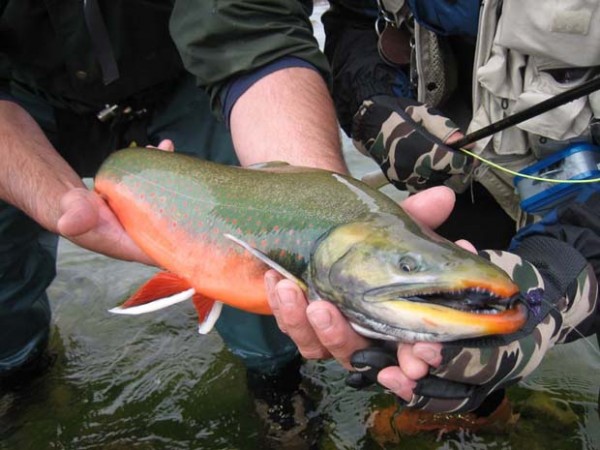Here’s a good piece by DENEKI OUTDOORS on casting big sticks at dollies with flies in-mind
November 12, 2013 – Alaska West
[dropcap]I[/dropcap]f you have spent much time fishing in Alaska, odds are you have seen your share of dolly flats.
During the second half of our season at Alaska West, we see an impressive push of Dolly Varden. Once the season’s first wave of salmon begin dropping eggs, these dollies as well as rainbow trout congregate on long shallow spawning runs in shocking numbers. Targeting these dollies with nothing more than a single bead is about as fast paced as fishing gets.
However, while this style of fishing can lead to impressive numbers of fish, the majority of these fish tend to run on the smaller size. Sure, there’s worse problems than catching too many “smaller” fish, but if you’re looking for the biggest fish in the run, try weeding through the tiddlers with this tip.
The next time you find yourself on a dolly flat, don’t go straight for the bead. Instead, try tying on a large sculpin or leech pattern of the “egg sucking” variety. Large loop sculpins or other articulated flies in the four inch range, with some sort of egg imitation at the head of the fly, work great. Cast downstream and across with your favorite switch or single hand rod, make a big mend, and just let ‘er swing! By increasing the meal size, you encourage the larger fish in the area to move for your fly while discouraging the smaller fish to attack such a large offering.
If you love swinging flies like we do, this is a great way of targeting trout with a small spey or switch rod as well. Due to density of Dolly Varden on these runs, most don’t realize the amount of trout that are fished over only to have a rogue foot-long Dolly Varden beat it to the fly. Also, these runs are tailored to swinging a fly through since they are usually long and slow (there’s a reason that salmon drop their eggs here!).
Try swinging a larger meal the next time you’re fishing the Dolly flats and you should see consistently larger Dolly Varden and more rainbow trout.







